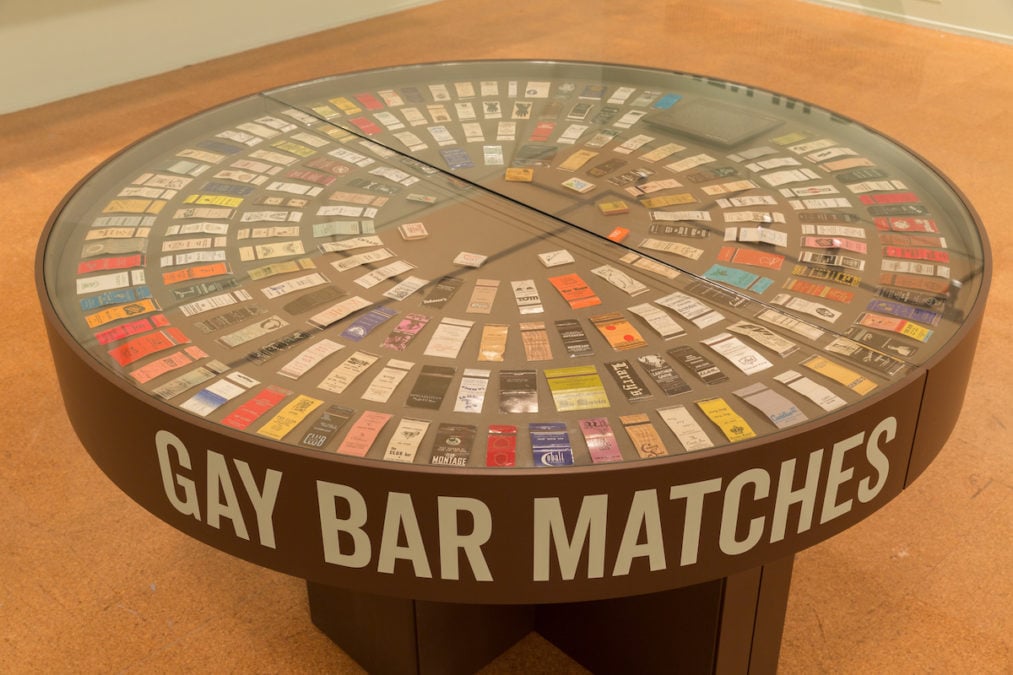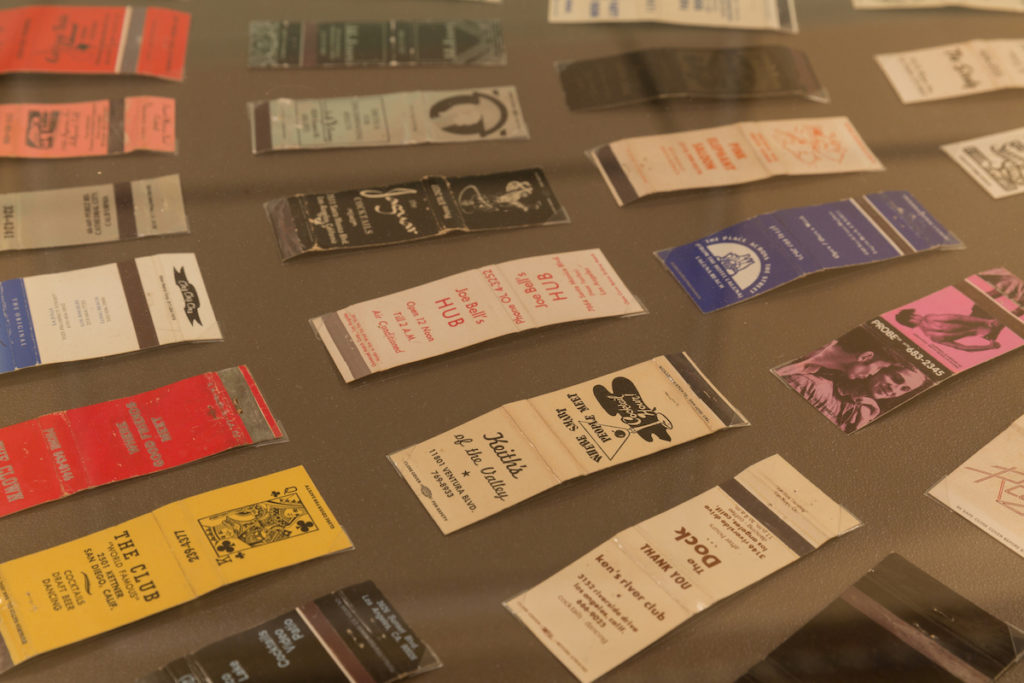
A collection of 200 matchbooks from Southern California gay and lesbian bars is part of the exhibit “21 Collections: Every Object Has a Story” and on display at the Los Angeles Public Library through March 24. Photos: Ian Byers Gamber.
The history of L.A’s gay bars is told in matchbooks, which represent a network of safe spaces for the LGBTQ community.
A collection of 200 matchbooks from Southern California gay and lesbian bars is part of the exhibit “21 Collections: Every Object Has a Story” and on display at the Los Angeles Public Library through March 24. The overwhelming majority of them are from Los Angeles with a number from Palm Springs and a small handful from San Diego.
The assemblage includes paper airplanes, vintage candy wrappers, birds nests and eggs, typewriters amassed by actor Tom Hanks, and a life-size elephant made of California walnuts that was originally assembled for the 1893 Chicago World’s Fair.
The matchbook collection is from the ONE Archives at the USC Libraries, the world’s largest collection of LGBTQ memorabilia and history.
Todd Lerew, program manager with the Library Foundation of Los Angeles, and exhibit curator, spent two years traveling around Southern California, visiting more than 600 museums, libraries, and private collections for materials to include in the exhibit.
Lerew talked with Q Voice News about the importance of matchbooks and some of his favorite pieces.
Here are some excerpts.

The matchbook collection is from the ONE Archives at the USC Libraries, the world’s largest collection of LGBTQ memorabilia and history.
Gay, lesbian matchbooks
“The 21 Collections exhibition highlights collections that tell unique or overlooked stories,” Lerew says. “Matchbooks are such a common thing to collect, but this collection from the ONE Archives is a more specific take on that, representing the changing face of the city.”
Historic, cultural significance
“Many matchbook collections paint a picture of an individual’s lived experiences from a certain era, but this collection actually represents the legacy of a whole community,” Lerew says. “These matchbooks represent a network of safe spaces, many of which were totally underground, for the queer community.
“A lot of individuals’ matchbook collections just represent a person’s favorite restaurants, but this collection – amassed by a number of individuals across decades – actually documents a scene,” Lerew says. “For some of the establishments, this serves as the only record that they ever existed.”
The Factory, historic gay club in West Hollywood, to be demolished
Matchbook stories
“I have heard a number of visitors recalling that a particular venue was where they met or had a first date with their significant other,” Lerew says. “My favorites are the ones with particularly evocative or humorous graphics, or with great names: The Big Banana, Basic Plumbing, Sewers of Paris.”
Exhibit takeaways
“Visitors connect with these in a very personal way,” Lerew says. “For someone with no relationship to this collection or any of the establishments represented, it could inspire contemplation about whose stories are preserved and how that history gets told.”
